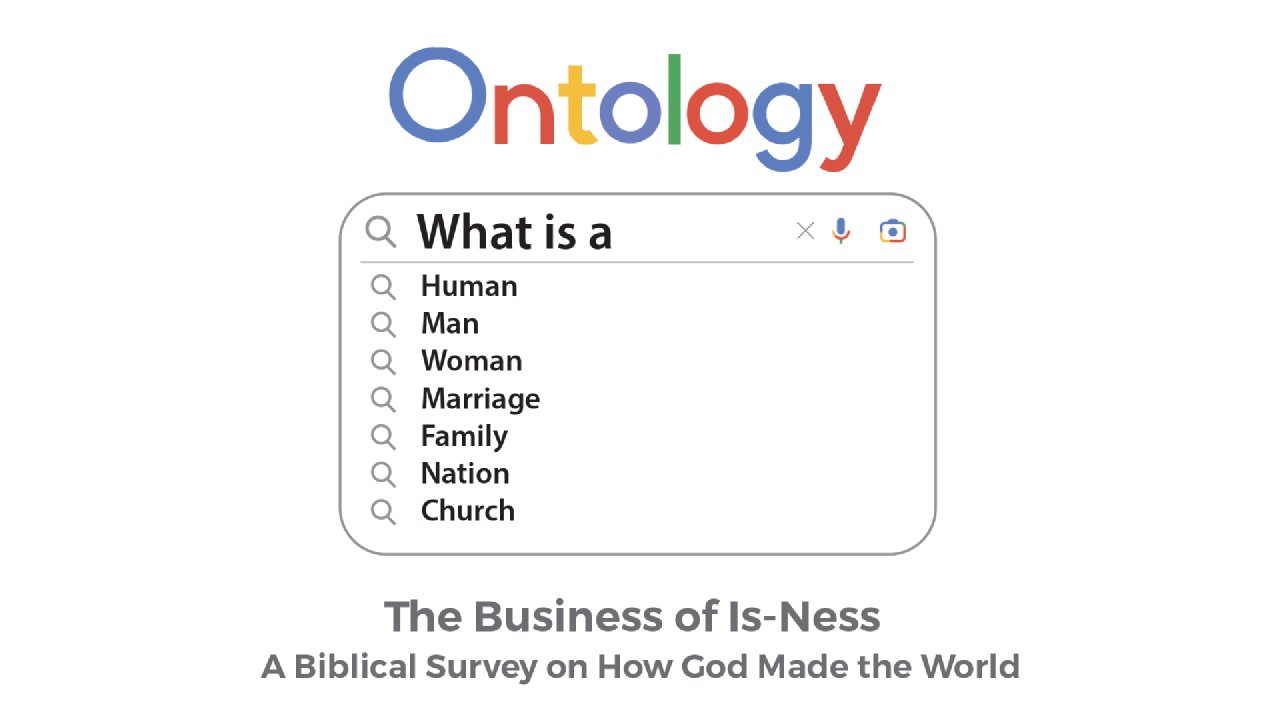What is a woman?
Answering this question is not difficult, unless you live in America, where over the last decade common sense has become all too uncommon. Except for those who hold fast to the realities of biology and the Bible, the simple question, “What is a woman?” has stumped Supreme Court nominees, the Office of Diversity and Inclusion at Johns Hopkins, and countless others who were interviewed by Matt Walsh in his recent documentary, What is a Woman? (If you haven’t seen it yet, you should).
On Sunday, we will take time to answer this question and we will go one step further. We will also answer the question, What is a man?
While our culture teaches us to think in parts and pieces, tidbits and talking points, we will attempt to look at something bigger—namely, what the whole Bible and nature itself says about men and women. Critically, we will see that women cannot be defined without men, nor men without women. Just read 1 Corinthians 11:8–9.
8 For man was not made from woman, but woman from man.
9 Neither was man created for woman, but woman for man.
When God made mankind in his image, he made them male and female (Gen. 1:27). And in that creation, he gave humanity one nature in two forms. And only in relationship to one another can the nature of each be fully understood. So, while it is appropriate to ask, What is a woman? Any answer that ignores men, will be shortsighted. And the same is true in reverse.
Sadly, our world has become so atomized, we don’t think like this. Even Matt Walsh’s eye-opening documentary doesn’t think like this. But by God’s grace, when we open up God’s Word, we will see men and women from the perspective of God himself. And I will warn you, what you may find may challenge how you think about men and women.
As we saw last week, God did not create individuals as individuals, he created image-bearers who are born into families. This means, the basic building block of society is not the single man or woman, it is the family. And individual men and women learn who they are not by looking within, but by looking without—at the mothers who nurse them and the fathers who discipline them. This is how God designed it.
And actually, the absence of family only proves the point. While the sins of abortion, divorce, and abandonment have often fractured these family bonds, they haven’t change the way God ordered his world. They have only marred that order. Likewise, as mad scientists are trying to create life without human parents, they are not changing the nature of humanity, they are only attempting to kill, steal, and destroy that nature—all in the name of research and design. Still, these experiments will end, but God’s nature created order remains. And so does God’s message of redemption.
Therefore, as we stand in the gap to pray for and plead that our neighbors would repent of their sins and to submit to their Maker, we must be able to confidently answer the question: What are men and women? What makes them similar? What makes them different? And why does this matter? Those are some of the questions we will answer on Sunday as we gather to worship.
To prepare for Sunday, take time to read Numbers 30, Proverbs 31, and 1 Peter 3. On this Father’s Day, those will be just a few of the passages we consider. And to press you to think more closely on this subject, take time to consider how much our culture (and the church!) has changed since the 1950s or the 1850s, when the practices of Numbers 30 were largely still in effect. Ask yourself, has the dissolution of Numbers 30 really served the cause of families, churches, women, and children? Or has it opened the door to all sorts of harm to women, men, and the children of God?
As the Lord allows, I will look forward to seeing you on Sunday.
As a reminder, the Bristow Community Group is in overflow this Sunday.
For His Glory and your joy,
Pastor David
---------------------------------------------------------------------------------------------------------------
Discussion & Response Questions
What are men and women?
Where did confusion about this question come from? How did feminism contribute to the confusion? How have you seen confusion manifest itself?
In what ways does individualism contribute to confusion about men and women? What about technology?
Why should we start with the human body? What role does anatomy play in defining male and female?
Is gender a social construct? Assigned by doctors or parents? Or is gender defined by God and the sex of the human? Why does this need to be addressed?
Can we say that men and women have behaviors? Or is that being stereotypical? Are stereotypes wrong? How does the Bible speak?
What evidence does the history of civilizations do to help answer the questions about men and women?
Why must we define men and women in relation to one another? See Genesis 1:27; Numbers 30; Proverbs 31; 1 Corinthians 11:8–9.
What direction does the Bible give to us? Is the Bible patriarchal (i.e., families led by and organized around the man)? Why or why not?
What does Numbers 30 teach? Is this only for the Old Testament? Or does it give instruction for today (see 2 Timothy 3:16–17)? If it applies today, how so?
Why is it important to recover a biblical understanding of manliness and womanliness? And how would you begin to do that?






